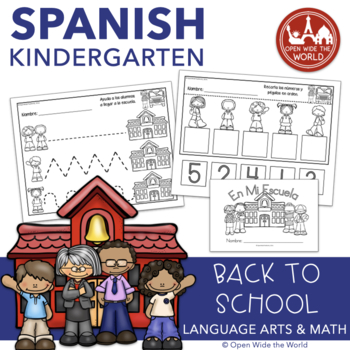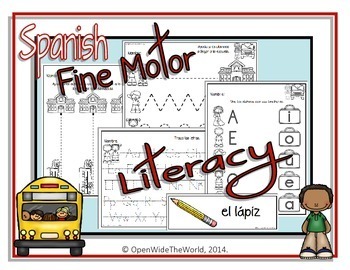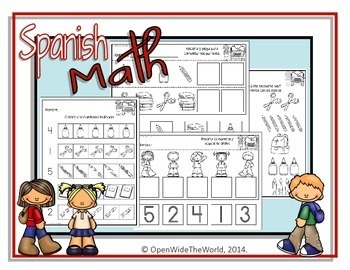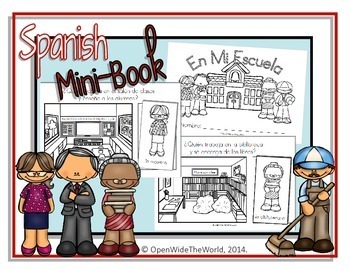Spanish Dual Language Kindergarten Back to School Packet
- PDF
What educators are saying
Description
Spanish Dual Language Immersion Back-to-School mini pack for Kindergarten. (Grade 1 in some Canadian provinces) No English on student pages!
This BTS-themed mini pack includes:
LITERACY
• Word wall cards, featuring 12 school-themed vocabulary words
• Upper & lower case vowel matching worksheet
• "En Mi Escuela" mini-book: students will meet 7 important school personnel and get to know their work spaces in this cut-and-paste mini book.
MATH
• Number order awareness cut & paste worksheet, for numbers 1-5
• 1:1 correspondence matching worksheet, for 1-5
• 1:1 correspondence, 5-frame coloring worksheet
• AB pattern recognition/completion cut & paste worksheet
FINE MOTOR
• Scissor skills: cutting straight lines
• Pre-writing tracing worksheet: straight line, zigzag line, wavy line
• Alphabet tracing worksheet (includes "ch," "ll" and "ñ")
If your students enjoy this BTS-themed kindergarten packet, be sure to check out my Spanish Fall Kindergarten packet, too!
Fabulous clip art by Educlips, some fonts by Sheila Melton





